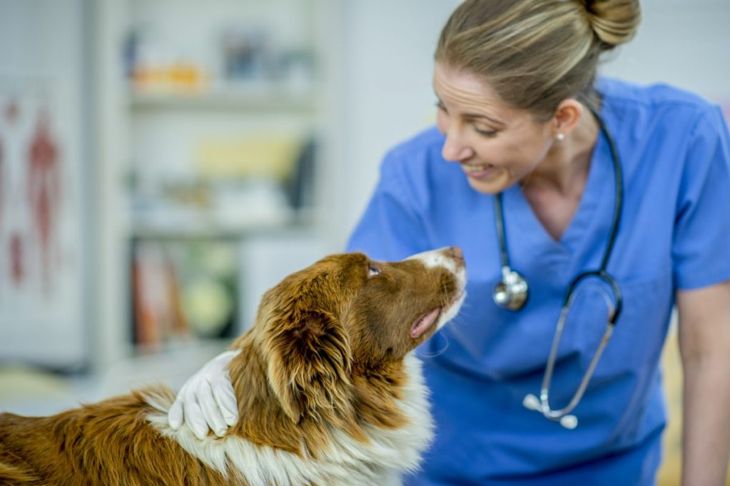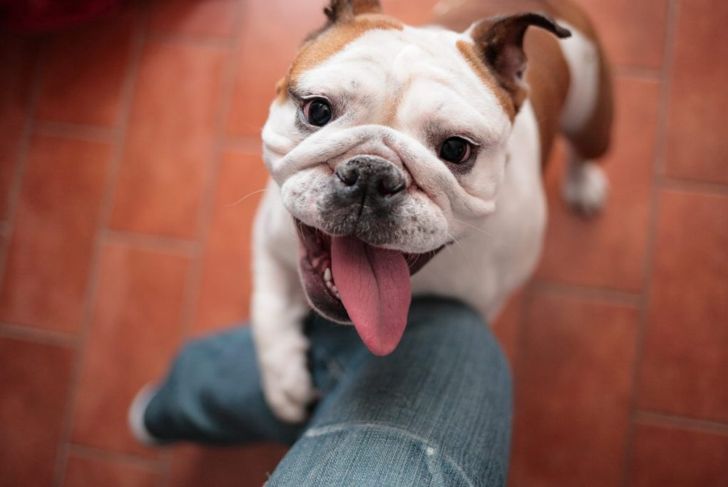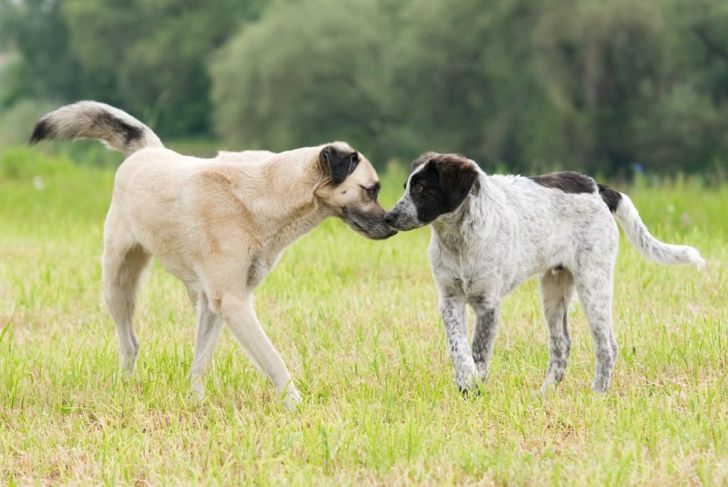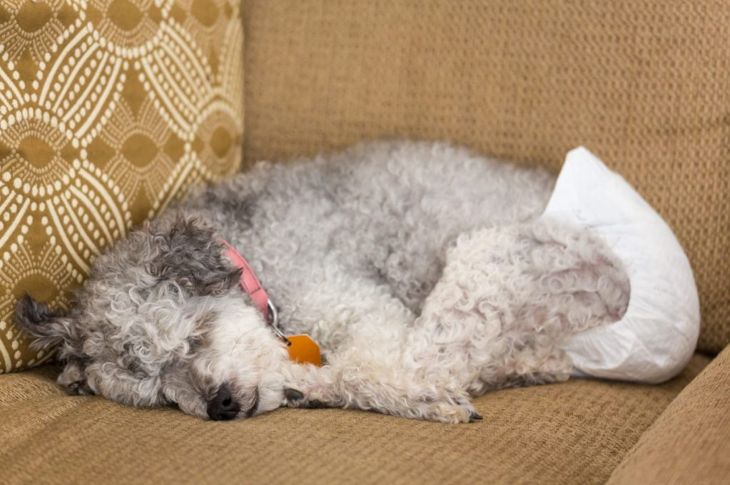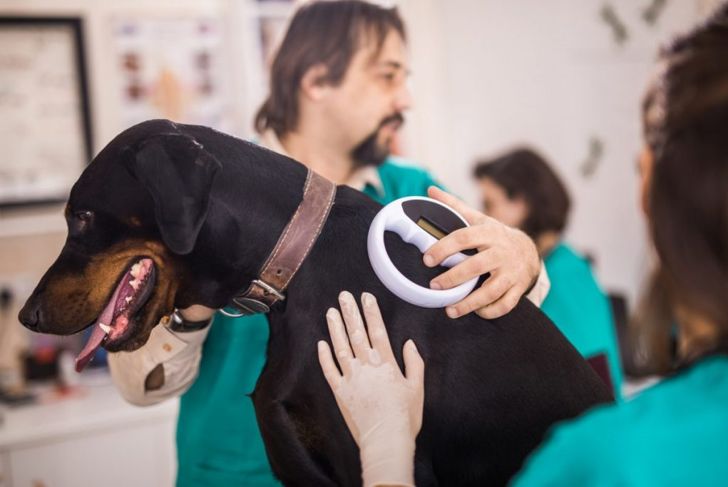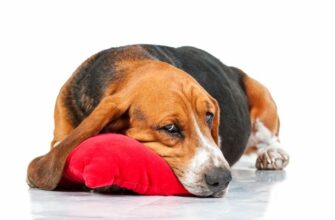Many people may have questions when they first start taking care of a female dog. They often wonder how to handle the dog being in heat and whether or not the dog has a period. Technically speaking, a dog does not have a menstrual cycle, and they do not have a classic human monthly period. However, this isn’t too far from the truth of the subject. Knowing the signs of a dog in heat and what to expect can allow owners to take better care of their dogs.
The Period Equivalent
Female dogs do have a cycle that is similar to human menstruation, but it has some key differences. This cycle, the estrous cycle, doesn’t occur until dogs reach a certain age. In some ways, this is similar to a human entering puberty. In general, the cycle begins in female dogs between the ages of 8 and 18 months. The frequency of the cycle changes dramatically between different breeds and sizes of dogs. Smaller breeds may cycle every few months while larger dogs may only cycle once a year. It is normal for cycles to be irregular, though a veterinarian can confirm if there is an issue.
The Four Phases
There are four stages to the estrous cycle that dogs go through proestrus, estrus, metestrus, and diestrus. As the proestrus stage begins, follicles of the ovary begin to grow. At the same time, estrogen influences the development of the lining of the uterus. In female dogs, this is the phase where they begin to have bloody vaginal discharge. The second phase, estrus, is what people refer to when they say a dog is “in heat.” This is the stage where the female dog is receptive to breeding. For dogs, ovulation usually begins around the fourth day of the estrus phase. Metestrus and diestrus are next and feature less estrogen stimulation, ending the physical changes of the cycle.
Physical Changes
Some dogs undergo physical changes during the estrous cycle. The most notable is the sudden onset of vaginal bleeding, but there are other signs. The exterior genitals, also known as the vulva, of some female dogs, may begin to swell during proestrus. Some dogs may begin to urinate more often. During estrus, the vaginal discharge may appear less red, changing to a clear or brown color. In the diestrus phase, the vulvar swelling should end, and the discharge should slowly cease.
Behavioral Changes
When a dog enters the first stages of the estrous cycle, it may begin to act nervous or jumpy. In proestrus, a female dog will often hold her tail close to her body. Some dogs become particularly clingy. Once they enter the estrus phase and go into heat, dogs will begin to move their tails to the side and make themselves available for breeding. Actions like these are “flagging” and show that they are likely ovulating. Owners who have an interest in breeding their dogs should visit a veterinarian for advice during this stage.
Other Dogs
When a dog enters the estrous cycle, other dogs will often react as well. When a dog enters heat, she releases pheromones that male dogs can smell from great distances. Male dogs in the home may attempt to breed with females in heat. Dogs outside the home may begin to urinate in the area in an attempt to mark their territory. Other female dogs may react aggressively to dogs in heat, even if they are normally quite passive.
Protecting from Discharge
Many pet owners may worry about their dog’s vaginal discharge staining and ruining their carpet, flooring, bedding, and other possessions. Thankfully, there are many options to combat discharge and messes. One method is to keep the dog in a mess-safe place with easy-to-clean floors such as a garage or concrete basement. If this isn’t possible, some companies do provide diaper-like products for dogs in heat. Additionally, a dog should never be kept in isolation or in a restricted area. A final option is to keep the dog outside, but this poses the risk of a male dog entering the yard and attempting to breed with her.
Differences In the Menstrual Cycle
Most mammals share a remarkably similar reproductive system, and it is usually only the detailed functions that are dramatically different. During a dog’s estrous cycle, their bodies absorb the uterine lining if conception doesn’t occur. The menstrual cycle causes the body to shed its uterine lining during menstruation rather than absorbing it. Additionally, animals with menstrual cycles are capable of being sexually active at any point in the menstrual cycle, while dogs are typically only sexually active during the estrus phase.
Handling a Dog in Heat
There are several important things that all dog owners should remember to practice while their dog is in heat. It can be dangerous to leave a female dog in heat alone outside. It is very easy for another dog to enter the yard and attempt to breed. If a dog must spend time outside, it’s important to be present to prevent any issues. Additionally, the dog should have a leash at all times during walks. Some dogs react differently to being in heat, so it’s important to ensure that the pet gets enough rest and exercise. Owners with concerns should visit a veterinarian with their questions.
Spaying a Pet
If an owner doesn’t wish for their dog to go into heat, it may be a responsible choice to have their dog spayed. Spaying is a common term that refers to ovariohysterectomy surgery. In this procedure, veterinarians will remove the uterus and the ovaries to prevent the estrous cycle from occurring. However, some veterinarians choose to remove only the ovaries. Not only does spaying a dog prevent the estrous cycle, but it also eliminates hormone fluctuations and helps prevent pyometra and breast cancer. It also reduces the likelihood that a dog will have separation anxiety.
Pyometra
Some dogs are at risk of uterine infection such as pyometra. This infection can be deadly and often requires spay surgery. Sometimes the infection causes a dog’s vaginal discharge to develop a foul odor. If the infection is “closed,” it can result in the buildup of pus. This will eventually lead to worsening symptoms and a high fever. If a dog chooses to stop drinking and seems to have fatigue, it is a sign that a veterinarian visit is immediately necessary.

 Home
Home Health
Health Diet & Nutrition
Diet & Nutrition Living Well
Living Well More
More
